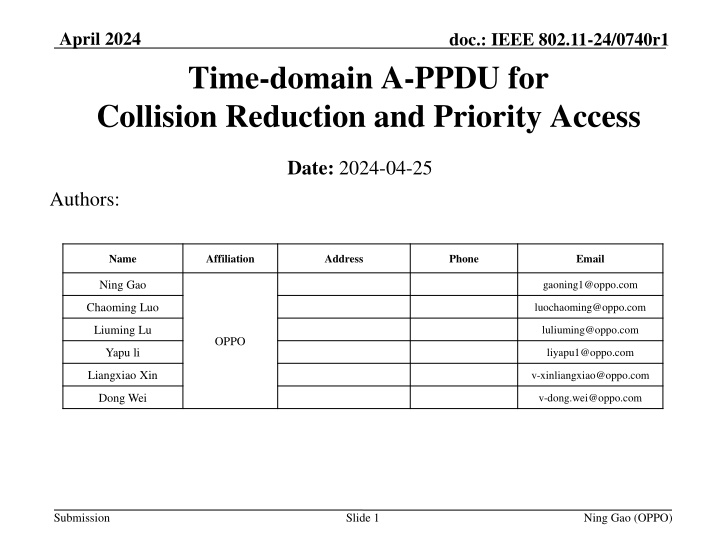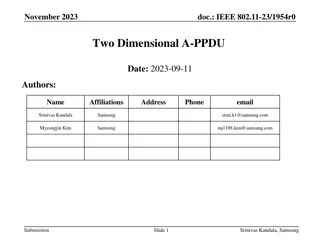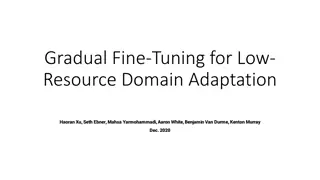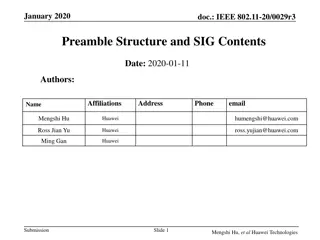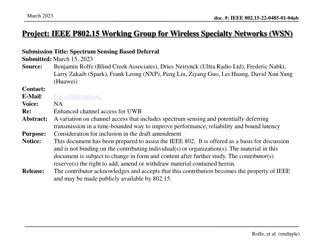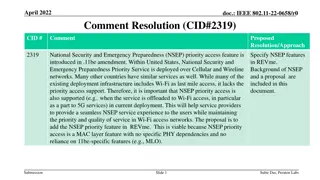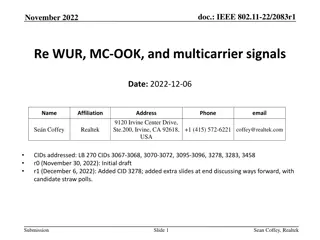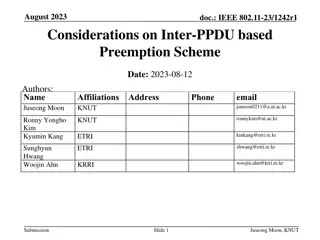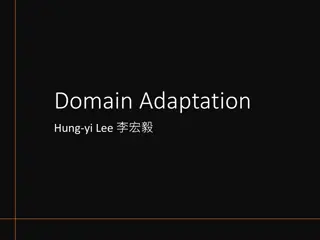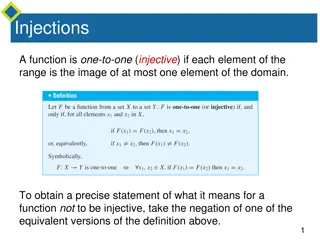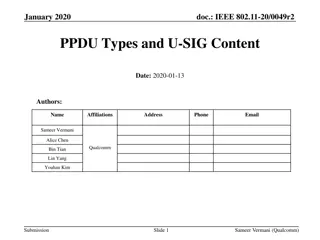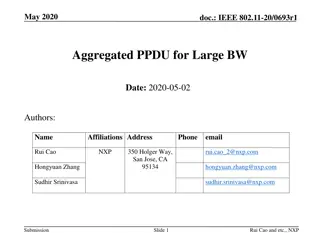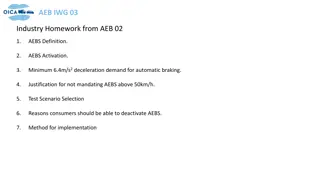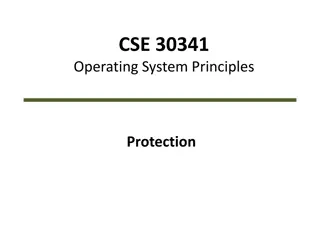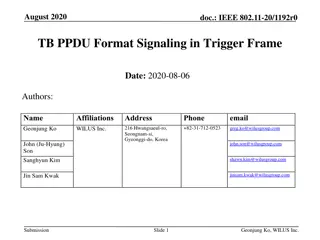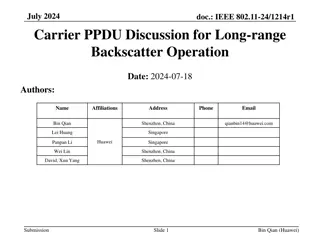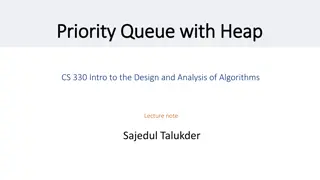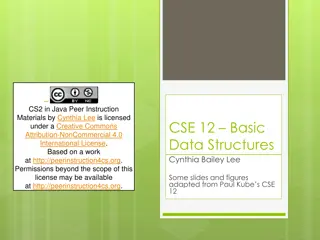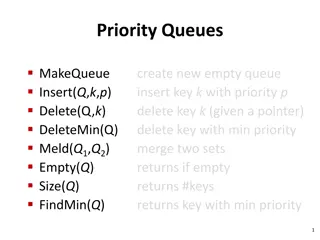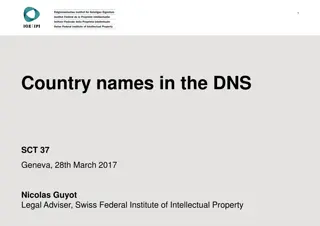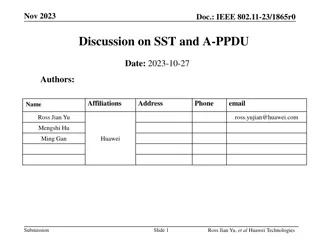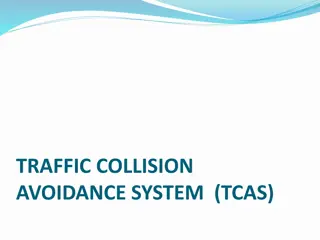Time-domain A-PPDU for Collision Reduction and Priority Access
This document discusses the Time-domain A-PPDU proposed for IEEE 802.11-24, aiming to reduce collisions and provide priority access for Low Latency (LL) UHR STAs. It explains the format of the Time-domain A-PPDU, how it can help reduce collision and double backoff, and improve channel access for priority traffic. The analysis section highlights the advantages and disadvantages of using the Time-domain A-PPDU in UHR networks.
Download Presentation

Please find below an Image/Link to download the presentation.
The content on the website is provided AS IS for your information and personal use only. It may not be sold, licensed, or shared on other websites without obtaining consent from the author.If you encounter any issues during the download, it is possible that the publisher has removed the file from their server.
You are allowed to download the files provided on this website for personal or commercial use, subject to the condition that they are used lawfully. All files are the property of their respective owners.
The content on the website is provided AS IS for your information and personal use only. It may not be sold, licensed, or shared on other websites without obtaining consent from the author.
E N D
Presentation Transcript
April 2024 doc.: IEEE 802.11-24/0740r1 Time-domain A-PPDU for Collision Reduction and Priority Access Date: 2024-04-25 Authors: Name Affiliation Address Phone Email Ning Gao gaoning1@oppo.com Chaoming Luo luochaoming@oppo.com Liuming Lu luliuming@oppo.com OPPO Yapu li liyapu1@oppo.com Liangxiao Xin v-xinliangxiao@oppo.com Dong Wei v-dong.wei@oppo.com Submission Slide 1 Ning Gao (OPPO)
April 2024 doc.: IEEE 802.11-24/0740r1 Introduction Compared with EHT, UHR aims at increasing throughput by 25%, reducing MPDU loss by 25% as well as reducing the latency by 25% for the 95th percentile of the latency distribution. However, collisions will result in a waste of channel, retransmission as well as a large delay or jitter due to the double backoff mechanism, so collision reduction could help UHR with all three goals. [1,4,5] Meanwhile, there is a strong demand for priority channel access of UHR STAs which have low latency traffic. [2,3] In this contribution, we intend to introduce a Time-domain A-PPDU to achieve the collision reduction and the priority access at the same time. Submission Slide 2 Ning Gao (OPPO)
April 2024 doc.: IEEE 802.11-24/0740r1 Proposed: Time-domain A-PPDU Time-domain A-PPDU format: Preamble Data Preamble Data First PPDU Second PPDU Compared with EDMG A-PPDU, the proposed Time-domain A-PPDU is a concatenation of two independent and complete PPDUs (i.e. a First PPDU and a Second PPDU). The two PPDUs can use different PPDU formats (e.g. a non-HT PPDU & an UHR PPDU). The two PPDUs are able to carry distinct frames (e.g. a Data frame & a Control frame). The purpose of the First PPDU is to create a guard interval to protect the Second PPDU from overlapping with other PPDUs. A longer First PPDU provides better protection but leads to more overhead. The available length of the First PPDU within a single BSS should be announced by the AP which is the same as EDCA Parameters Set. Submission Slide 3 Ning Gao (OPPO)
April 2024 doc.: IEEE 802.11-24/0740r1 How to use the Time-domain A-PPDU A UHR STA with low latency traffic (i.e. STA 1 in figure bellow) could contend for the channel by transmitting a Time-domain A-PPDU while following the EDCA rule. If a collision happens, due to the existence of the First PPDU, the Second PPDU is able to present on the medium later than other PPDUs. Therefore, the TXOP responder (i.e. AP in figure bellow) could detect and receive the Second PPDU successfully which includes a RTS frame and then response a CTS frame to STA 1. In this way, STA 1 obtains the channel with priority and this collision is avoided. AIFS CTS Preamble Data (RTS) (RA=STA1) AP (UHR) Time-domain A-PPDU Preamble Data (DATA) Data (RTS) Preamble STA 1 (UHR LL) Busy Medium Data (RTS) Preamble STA 2 (UHR) Preamble Data (RTS) STA 3 (Legacy) Collision No Collision Submission Slide 4 Ning Gao (OPPO)
April 2024 doc.: IEEE 802.11-24/0740r1 Analysis Advantages Reduce collision and double backoff Priority Access for LL UHR STA Limited influence on the fairness EDCA is still there Improved tail latency at the cost of worse minimum latency, a trade-off. Disadvantages Extra constant latency overhead due to the duration of the First PPDU Maybe 1~2ms, but it is negligible when compared with overall latency(10~100ms). Also, the First PPDU could be used to transmit low QoS requirement traffics. Collisions may still happen Collison is inevitable in a distributed system, can be reduced but never eliminated. In this scheme, an A-PPDU may conflict with another A-PPDU or a long single PPDU. But these collisions are reasonable and can be solved by double backoff. Hidden Node Problem The First PPDU is without protection as it is transmitted before a RTS/CTS exchange. Submission Slide 5 Ning Gao (OPPO)
April 2024 doc.: IEEE 802.11-24/0740r1 An Alternate of Time-domain A-PPDU Alternate SIFS Preamble Data Preamble Data First PPDU Second PPDU The proposed time-domain A-PPDU also can be achieved by transmitting the First PPDU and the Second PPDU with a SIFS interval, which is already supported by the 802.11. The way to use this alternate is the same as the Time-domain A-PPDU. This alternative method is easier for implementation compared with A- PPDU. Submission Slide 6 Ning Gao (OPPO)
April 2024 doc.: IEEE 802.11-24/0740r1 Summary A Time-domain A-PPDU is proposed in this contribution to achieve collision reduction as well as priority access at the same time. The Time-domain A-PPDU is composed of a First PPDU and a Second PPDU The First PPDU is used to create a guard interval to protect the Second PPDU from overlapping with other PPDUs. The Second PPDU is carrying the intended frame. The format or length of the First PPDU can be seen as another kind of EDCA parameter. An alternate of the Time-domain A-PPDU is also supplied. Submission Slide 7 Ning Gao (OPPO)
April 2024 doc.: IEEE 802.11-24/0740r1 Reference [1] 11-22-1519-00-0uhr-requirements-of-low-latency-in-uhr [2] 11-23-1065-00-0uhr-low-latency-channel-access [3] 11-23-2126-00-00bn-low-latency-channel-access-follow-up [4] 11-24-0284-01-00bn-low-latency-low-collision-low-power-uhr-medium- access [5] 11-24-0031-00-00bn-deterministic-backoff Submission Slide 8 Ning Gao (OPPO)
April 2024 doc.: IEEE 802.11-24/0740r1 Appendix: EDMG A-PPDU The EDMG A-PPDU defined in 11ay is a concatenation of EDMG PPDUs shown as bellow. The first PPDU of an EDMG A-PPDU includes L-STF, L-CEF, L-Header, EDMG-Header-A, EDMG-STF, EDMG-CEF, and Data fields, and each subsequent PPDU includes EDMG-Header-A and Data fields only. Submission Slide 9 Ning Gao (OPPO)
